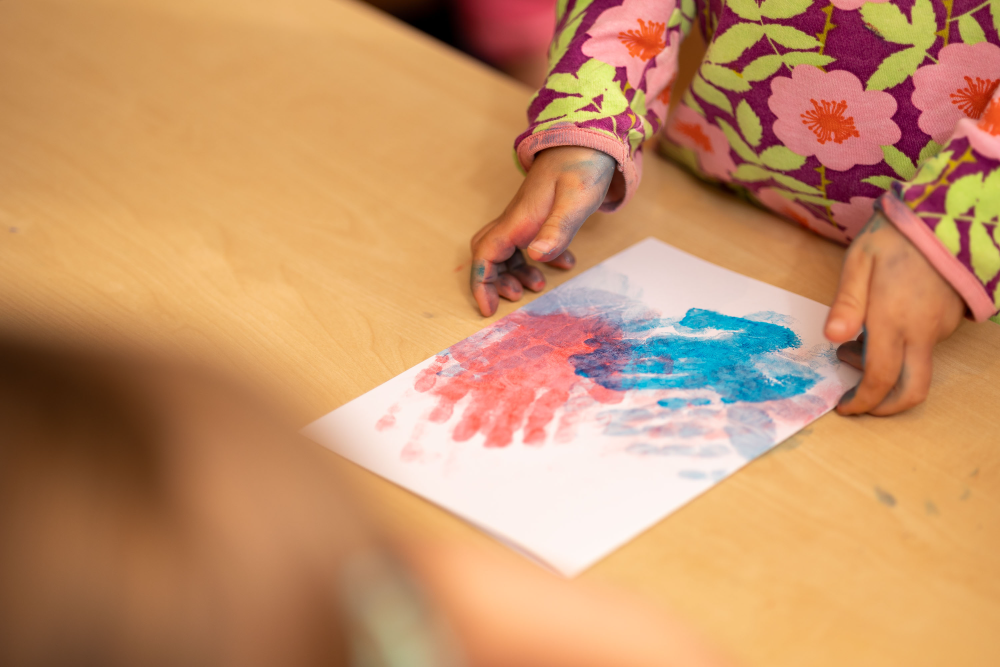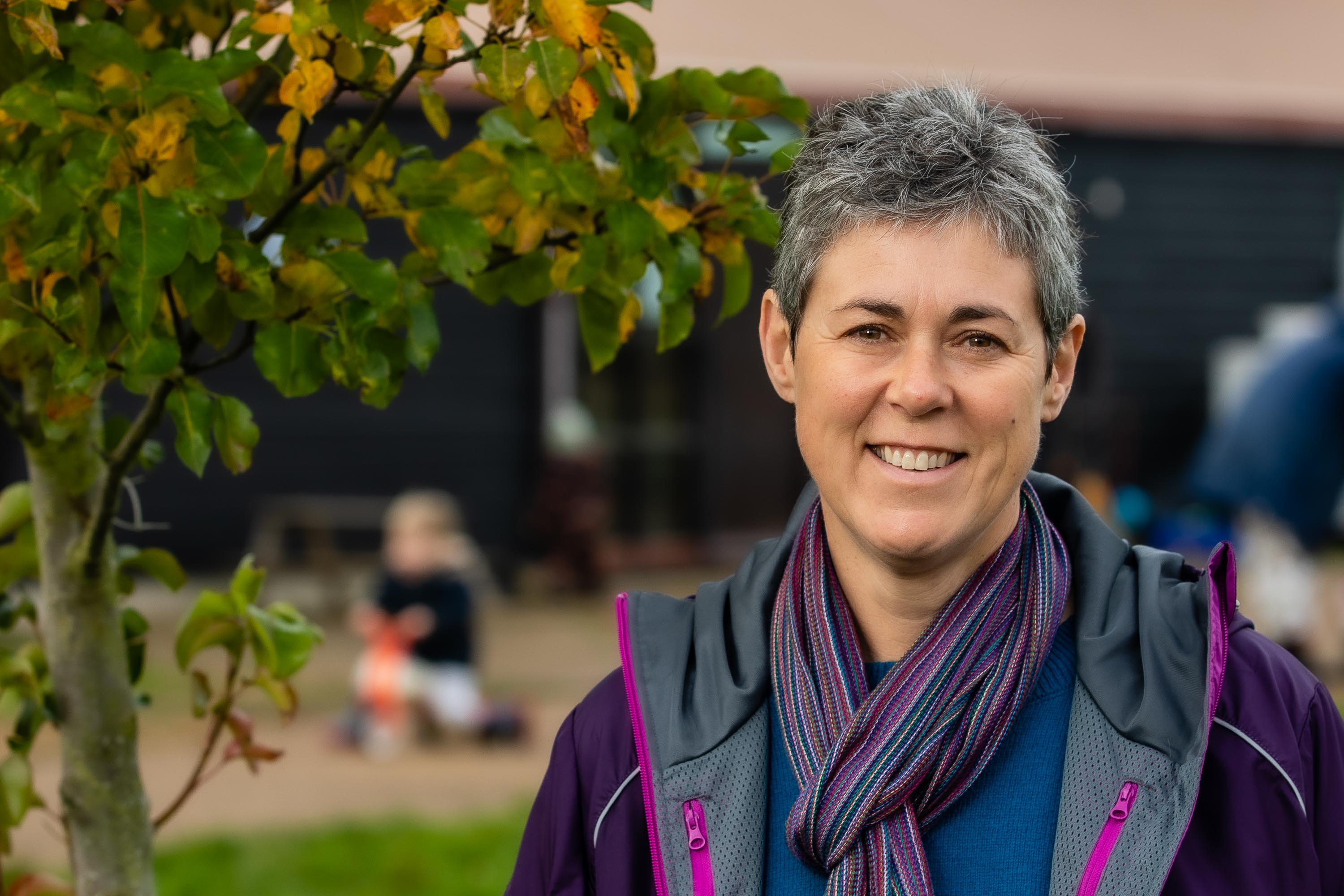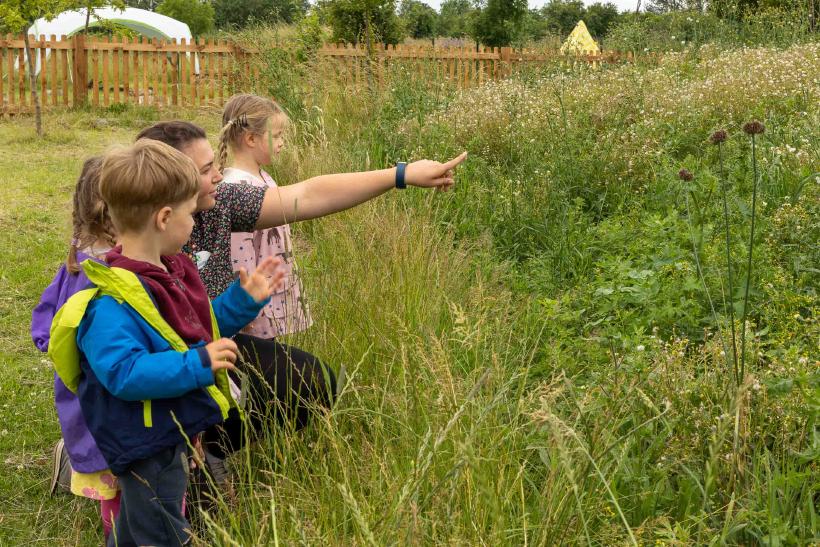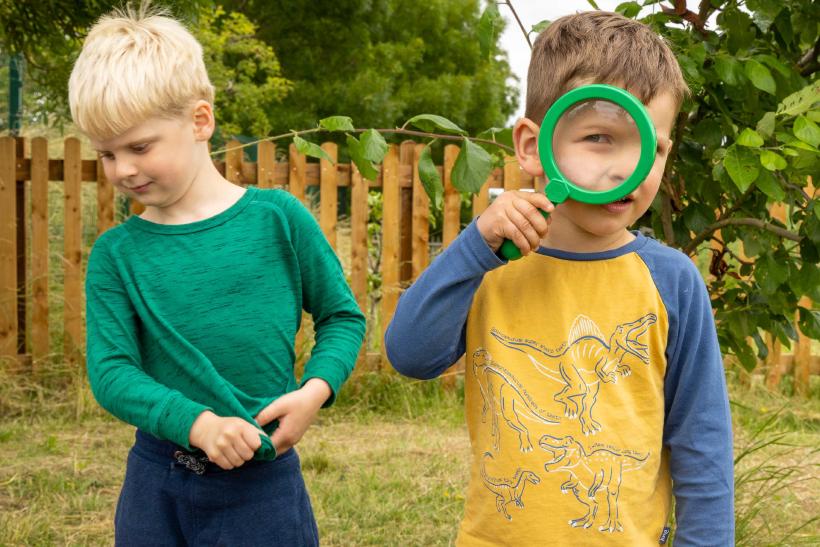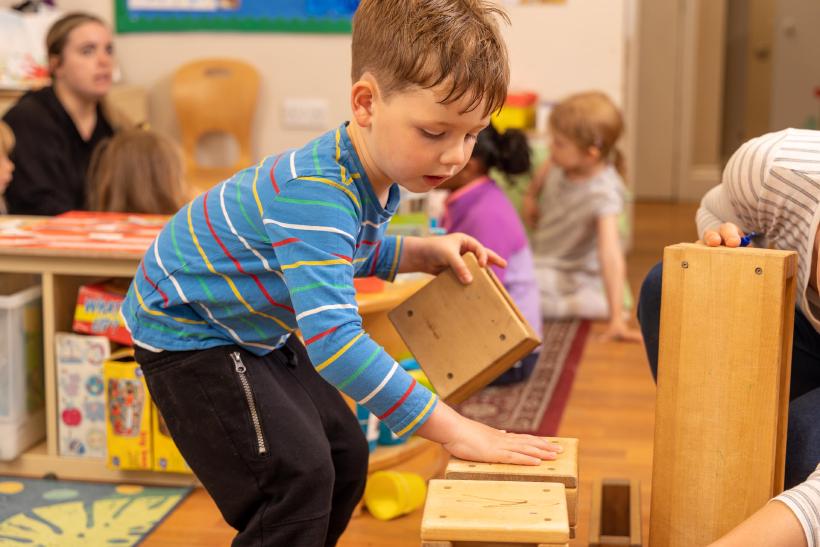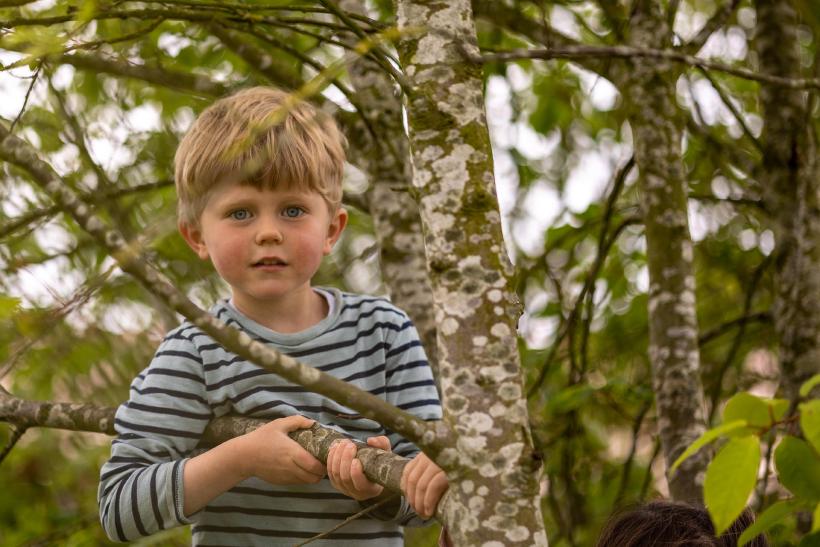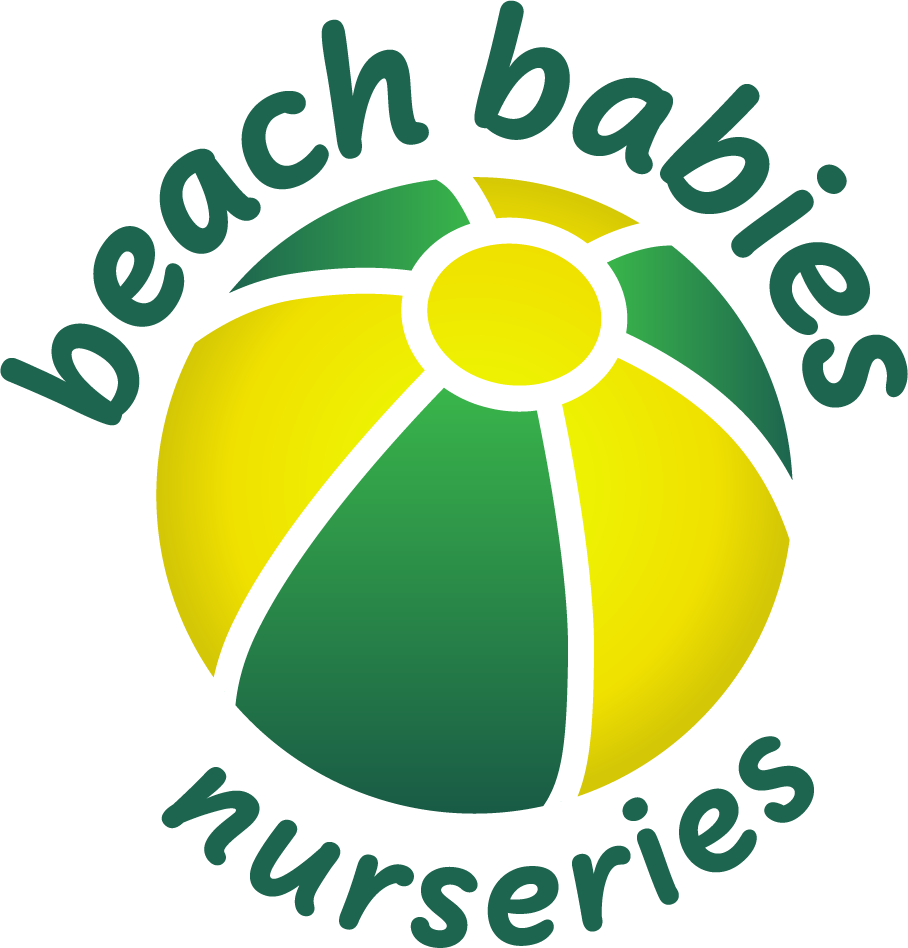We don’t all see the world in the same way
Recognising the value of creativity at every stage of a child’s development
Why imagination and creativity are important:
From birth, children have unique responses to all that they see, hear, feel and experience in their daily lives. These responses can be physical, emotional, social or cultural. Babies in utero can respond to music and after they are born - as they grow, their responses will develop into movements to music, and potentially the ability to follow rhythm and create dance routines to represent their own emotional response to different genres of music.
Creativity and resourcefulness are the result of active imaginations. By providing opportunities, time and space for children to investigate their individual creativity and imagination, it will promote their developing ability to focus, be independent, have a desire to explore and use ingenuity to problem solve. By valuing their suggestions and contributions, they build confidence and resilience.
I believe that we have a duty to enrich children’s lives by exposing them to different art forms and promote the importance of sharing their reactions and thoughts about the experiences with peers and adults. Relating to others, having the ability to share opinions, ideas, stories and creations, keeps children emotionally grounded, and the confidence to enter imaginary worlds.
What this means in practice:
In nursery, we carefully consider the range of opportunities we can offer to support and enhance children’s creativity and imagination. We do this by providing a wide range of multisensory experiences, materials and mediums to inspire and motivate the children to think, make, review and adapt their creations. Exposing children to different art forms, educates, inspires and motivates exploration.
It is vital that we focus on the experience rather than have a defined outcome. Children’s responses or representation may be different to what was expected and that should be welcomed.
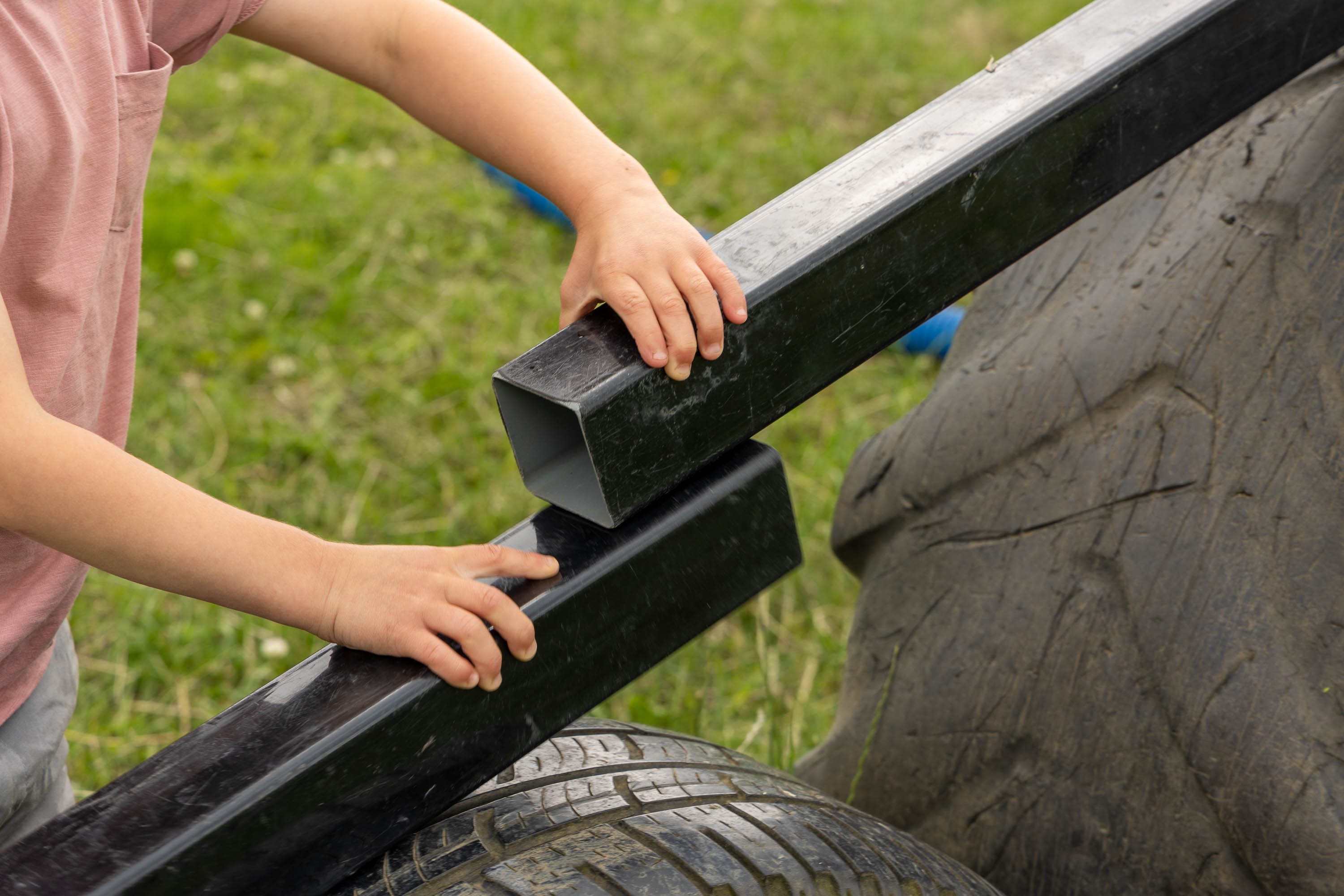
When we are planning opportunities for children to explore their creativity within nursery, we ask ourselves: What is the purpose of the activity? Is it developing a skill, concept or understanding of a curriculum theme?
Practice with negative impact:
As adults we have to be mindful, not to stifle creative freedom by: Showing children how we expect their painting of a pumpkin to look and only offering one paint colour; Setting up a craft station where all the children have to make a something in a specific way with identical resources; Giving children templates, outlines to colour in or pre-determined shapes to use in their craft activity. These strategies quash all creative freedom. They prevent us focussing on the process of the learning and instead give the child the message that the outcome is what’s important here and therefore the possibility of failure not to meet the brief.
Practice with positive impact:
We must value interactions with the children about their creations. ‘If you want to make a picture of the bumblebee you saw outside, what materials shall we use? What colours would work best here? What shape will you make the body? How would be the best way to create the stripes?'. It’s important that we consider the creative freedom we offer in our learning environment. Can children go into the clay area and make a spider if they choose to? Can they problem solve how to attach the legs and use books to help them know how many legs spiders have? We can learn so much more about the children’s thought processes, interpretation of the world around them, problem solving skills, ability review, edit and adapt creations etc and in doing so, confirming to them that their ideas, choices and creations are valued.
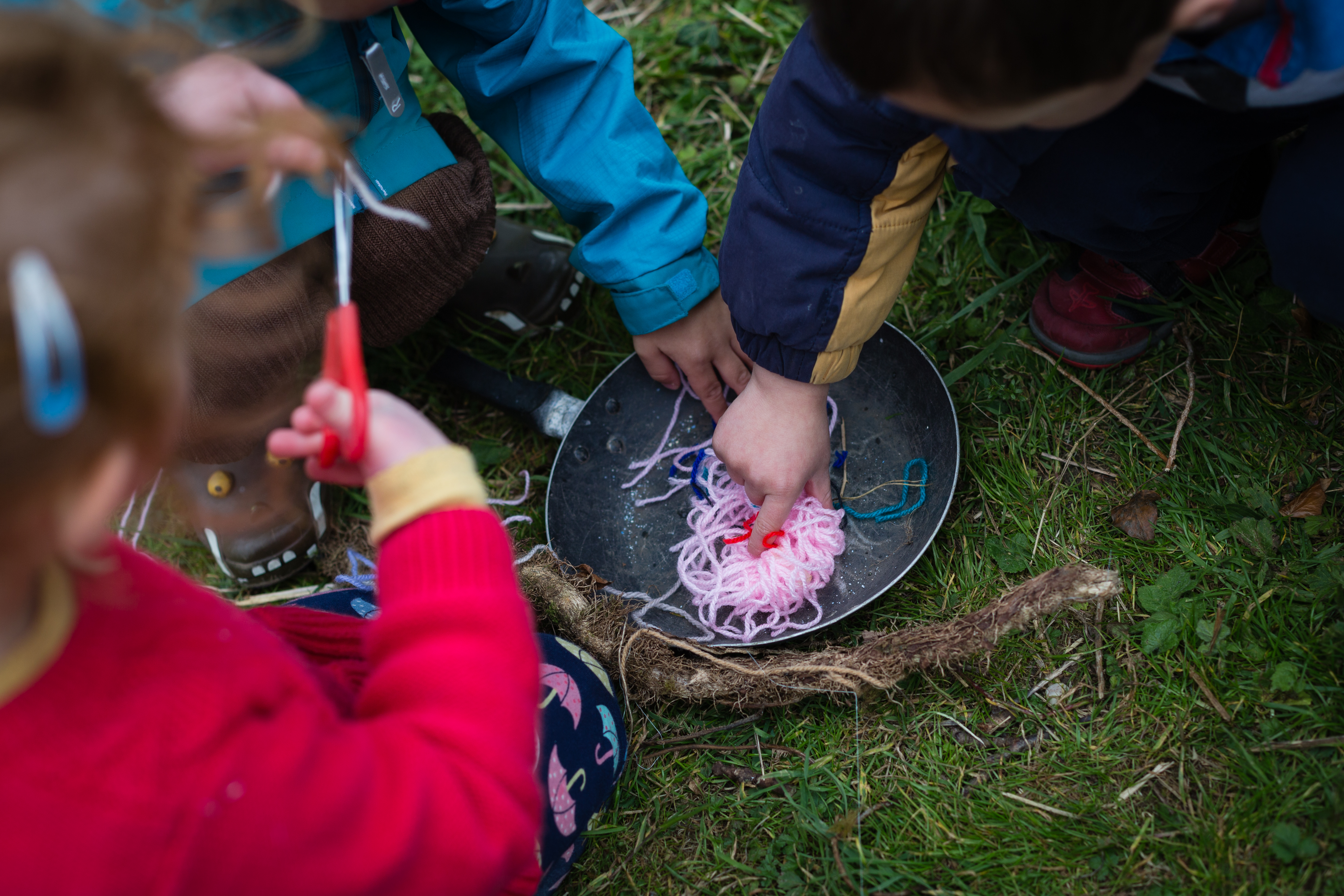
Art, Mark Making and Creativity aspects to consider at home.
Mark making = shape + colour + pattern + texture
It is the process that is important, not the end product.
- INDIVIDUAL: Every piece of art is individual and should be valued. Show the children their value by displaying creations in the house, post creations to relatives, take a photo and use as a screen saver.
- SIZE: Offer a range of sizes and different shape paper/ fabric etc. to mark make on. i.e. Big paint brushes, buckets of water outside to make make onto bricks and patios or long thin strips of paper to create repeating patterns onto by drawing or printing.
- TEXTURES: Offer a range of textures– wallpaper, tissue paper, fabrics, wood, metal, tin foil, plastic, leaves, sticks, stones etc
- VALUE THEIR CREATIVITY: the space around their picture on the page is their choice– if they have a tiny drawing in the corner of the paper, do not cut it down to size.
- LANGUAGE: Avoid asking ‘What are you making?’ or ‘What is it?’ Instead describe what you see colours, shapes, movement, materials, sounds, lines or feelings, providing rich language for the child.
- MARK MAKING RESOURCES: water colour, acrylic, water, pastels, chalks, crayons, fabric pens/paints, chalks pens, shaving foam and food colour, coloured rice/ sand
- STYLES OF ART: dot painting, abstract, screen printing, lino cuts, splatter painting, blow painting, tin & marble, paper plate stencils, printing (mashers, bubbles wrap on shape cutters, rolling pins, corks, spray, splatter, drop, sponges), mosaics, shapes (Mondrian, Matisse, Picasso), threading.
- TEXTILES: weaving, sewing, wool winding around sticks and small branches.
- SCULPTURE: 3D; playdough, clay, junk modelling, construction toys, loose parts, natural items- stones, sticks etc, paper mâché,
- TRANSIENT: art that is moveable – pictures frames to create within; large scale loose parts, natural objects, loose parts INSIDE & OUTSIDE (Andy Goldsworthy)
- INTRODUCTION TO ARTISTS: expose children to different styles of artwork and artists from babies onwards. Picture cards and posters. Music and art are linked. If you are able to visit an art gallery – find the children’s activity packs available in most galleries, that will signpost you to artwork the children will engage in. If they have a love of castles, animals or trains – seek out artworks that reflect their interests.
- MARK MAKE TO MUSIC: children can respond to music through mark making. Play different music genres and styles, fast paced polka/ slow classical – encourage children to mark make in time to the music (polka – short dots and dashes, classical long flowing lines)
- STORY TELLING THROUGH ART: find an interesting picture and spend time looking at it closely in different ways. Play I spy with colours; with your children use the picture as a starting point to create a story together i.e. a boat could be on an adventure with treasure on board, a jungle could have animals playing hide and seek.
